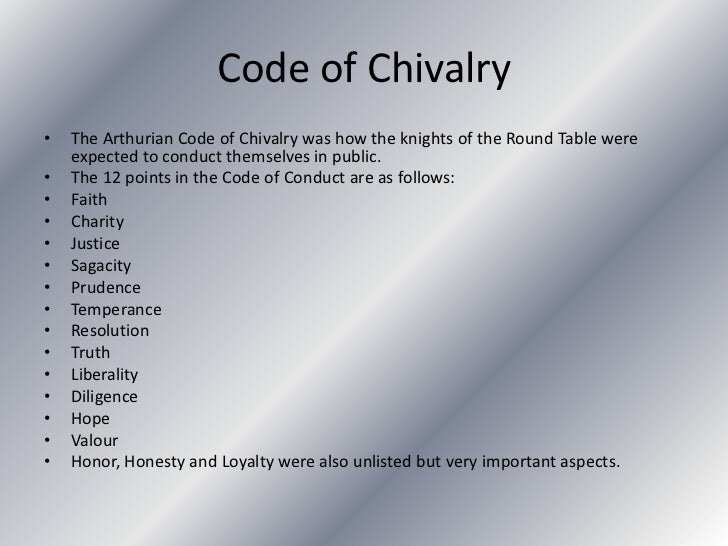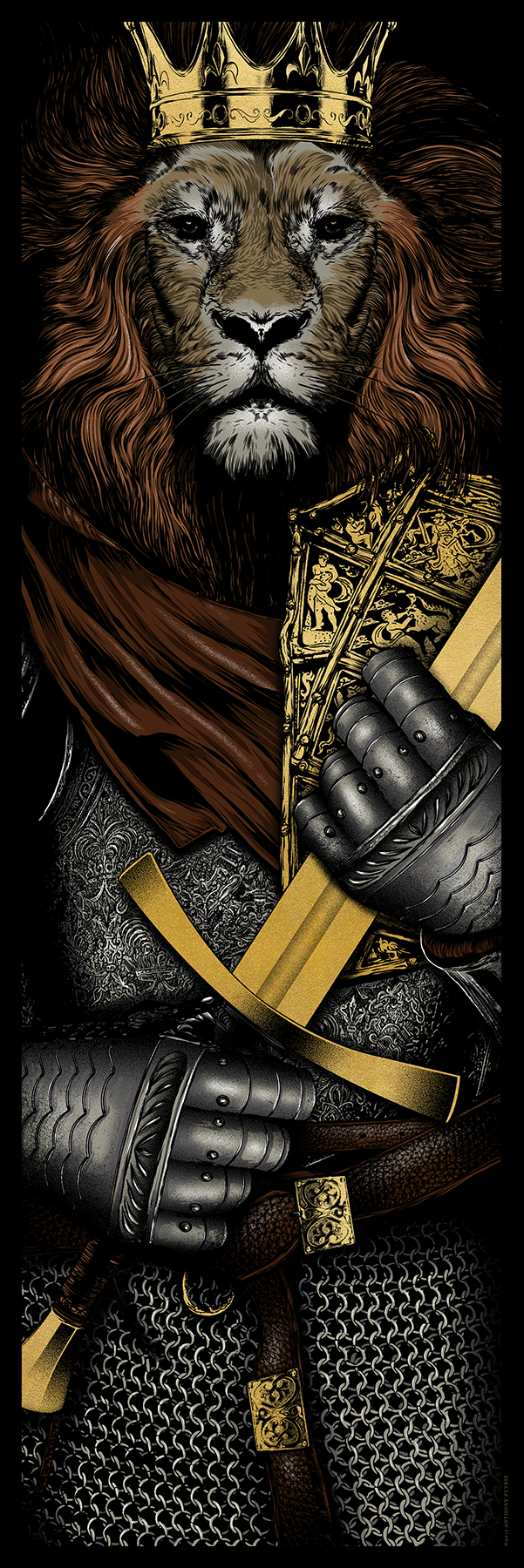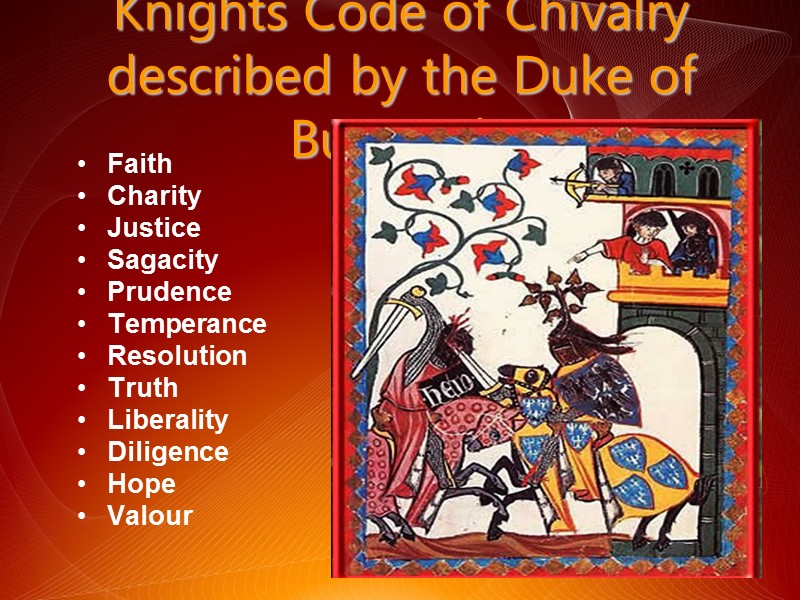
The magnificent sight of a troop of heavily armoured knights galloping on to the battlefield won many a medieval conflict before it had even started.Ĭhivalry had another purpose besides making people well-mannered: to clearly separate the nobles from the common people.
Chivalry code for knights code#
The discipline of the chivalric code must also have helped when armies were in the field (but not always), as did its inspirational emphasis on display knights preened about the battlefield like peacocks with jewelled swords, inlaid armour, plumed helmets, liveried horses and colourful banners of arms. The state also saw the benefits of promoting a code by which young men were encouraged to train and fight for their monarch.

This relationship between religion and warfare only heightened with the Arab conquest of the Holy Lands and the resulting Crusades to reclaim them for Christendom from the end of the 11th century CE.

The clergy keenly promoted chivalry with the code requiring knights to swear an oath to defend the church and defenceless people. Function & PromotionĬhivalry, derived from the French cheval (horse) and chevalier (knight), was originally a purely martial code for elite cavalry units and only later did it acquire its more romantic connotations of good manners and etiquette. By the 14th century CE the notion of chivalry had become more romantic and idealised, largely thanks to a plethora of literature on the subject and so the code persisted right through the medieval period with occasional revivals thereafter.

Evolving from the late 11th century CE onwards, essential chivalric qualities to be displayed included courage, military prowess, honour, loyalty, justice, good manners, and generosity - especially to those less fortunate than oneself. Chivalry was, in addition, a religious, moral and social code which helped distinguish the higher classes from those below them and which provided a means by which knights could earn themselves a favourable reputation so that they might progress in their careers and personal relations. Shed blood for your brethren, and if needs must, to lay down your life.In medieval Europe, a code of ethics known as chivalry developed which included rules and expectations that the nobility would, at all times, behave in a certain manner. To fend off injustice from the poor, to make peace in your own province, to Protect the Church, to fight against treachery, to reverence the priesthood, In the 12th Century,Ī writer called John of Salisbury declared that it was a knight's duty 'to Perfect knight was a very important one in the Middle Ages. A lot of knights did not behaveĪs well as this in real life, particularly in war. Stories and poems like the one you are reading by Chrétien de Troyes showĪrthur and his knights acting chivalrously. It was not courteous to kill an enemy if he begged for mercy and agreed to be a prisoner.Ī knight rescuing a damsel in distress from a monster. If the horse had run away, the knight should get off his own horse and fight his opponent on foot. If a knight knocked his enemy off his horse, he should wait until the other knight mounted again before attacking. For example, it was not courteous to try to injure an enemy's horse. Or having good manners but showing kindness and respect and thinking about theĬourtesy also involved acting correctly when fighting.

Meant to behave at all times with courtesy - which meant not just being polite Generous to others and loyal to his lord, his family and his friends. Was called prowess), to respect women, to defend the weak and the poor, to be Horseback, like our English word 'cavalry'.Ī knight was supposed to show bravery, strength and skill in battle (this The word comesįrom the old French word 'chevalerie', which was used for men who fought on What was chivalry and what were its 'laws'?Ĭhivalry was a set of ideas about how a knight ought to behave.


 0 kommentar(er)
0 kommentar(er)
